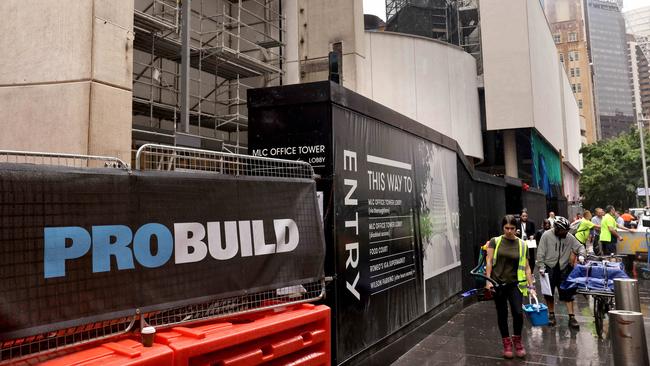
Subcontractors do not know which builders are about to collapse and so are becoming increasingly reluctant to tender, especially as their own solvency is also often under threat.
Unless a way is found to restore solvency confidence in leading building companies, the industry will gradually wind down as the pace of collapses accelerates and the fog deepens.
We are looking at a far more serious threat to Australian long-term building activity than anything likely to happen as a result of higher interest rates.
To my knowledge the last time anything like this happened to a major Australian industry was in banking around 2008, during the early days of the Global Financial Crisis.
Around the world, including Australia, nobody knew which banks had been ensnared by the vast numbers of worthless securities that had been created for the international subprime mortgage market.
Australian banks were potentially in danger because their participation in overseas banking markets and derivatives exposed them to the potentially insolvent global banks.
The banking fear was building throughout 2008 but gathered intensity after the collapse of the US derivatives-based investment bank Lehman.
Suddenly Australians began to worry about the security of their bank deposits. For some, depositing money under the bed started to seem a lot safer. The threat of a run on bank deposits was real, especially among smaller banks.
Wayne Swan had become Treasurer late in 2007 and led the world in devising ways to restore confidence in a banking system.

Under the administration of the Reserve Bank, Swan effectively issued an Australian government guarantee for the first $1m of bank deposits.
That decisive action was vital in insulating Australia from the Global Financial Crisis, although we were also helped by government stimulation and the increased demand for our resources from China.
But neither the stimulation nor China would have saved Australia from the worst of the GFC without the restored confidence in our banking system.
In recognition of his unique achievements, Wayne Swan was declared world finance minister of the year by international banking and finance magazine Euromoney. The only other Australian Treasurer to gain such an award was another ALP Treasurer – Paul Keating in 1984.
Fast-forward to 2022 and a “subprime loan equivalent” has hit both commercial and residential contract builders, who tendered on fixed prices, as was required by the banking system.
They gave themselves a margin but those margins were totally inadequate to cover the huge rises in the costs of materials and the delays in supply.
Accordingly, builders are now falling over on a regular basis. And each time one collapses subcontractors are hit, although the damage has been contained by the work of an arm of the Australian Building and Construction Commission, which has forced major builders to pay subcontractors quickly.
There has not been the vast unpaid subcontractor debt backlogs that we have seen in previous years. But that protection has been withdrawn by the ALP government, so payments to subcontractors will now delayed, which will deepen the crisis.
Accordingly, increasingly subcontractors will demand payment in advance before undertaking any work. But on the other side, builders are petrified about making advance payments because big losses are also accumulating among many subcontractors.

So neither the builders nor the subcontractors have confidence in each other’s solvency.
Meanwhile “subbies” are not only simply not prepared to risk being wiped out by tendering to potentially insolvent builders, but many who tendered on a fixed price basis are taking actions that are akin to “going on strike”. They are no longer prepared to complete past tenders that will send them into insolvency. In turn this increases the threat to the solvency of prime builders. It’s a vicious circle.
Some builders are tendering new work without subcontractors tied in but are adding vast margins to protect themselves. Those seeking building contracts are shocked at the prices.
It is going to require action by the federal government led by Treasurer Jim Chalmers. His first step should be to consult the current ALP president — none other than Wayne Swan. The former Treasurer will be able to pass on insights he gained in the banking crisis given its similarity to current building crisis.
I am not going to set out a series of possible formulas to restore confidence in the building industry but, like banking in 2008, there is going to have to be some form of government credit assurance.
While the task in the 2022 building crisis is much smaller than 2008 in banking, it is more complex.
Meanwhile Australia has a massive amount of infrastructure to build as part of the government’s planned legislation to reduce carbon emissions. The looming influx of migrants will also stimulate the building industry. But if the current fog of mistrust is not removed then the nation will not have the capacity to undertake those tasks in the timeframe that is required.




The Australian commercial and residential building industry is gradually being engulfed in a fog of fear and mistrust.